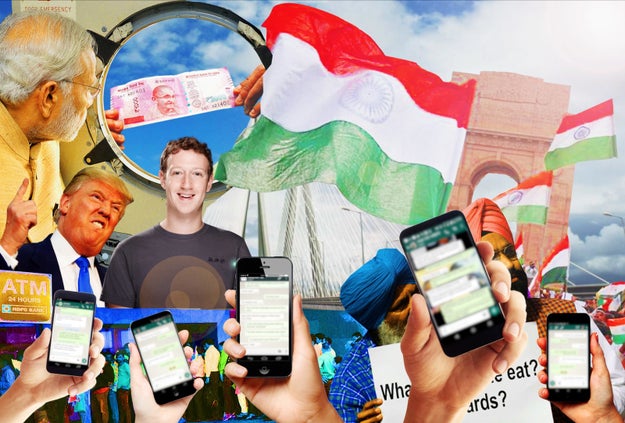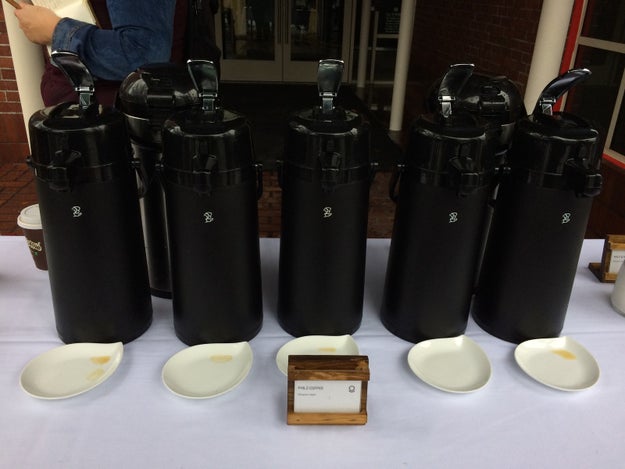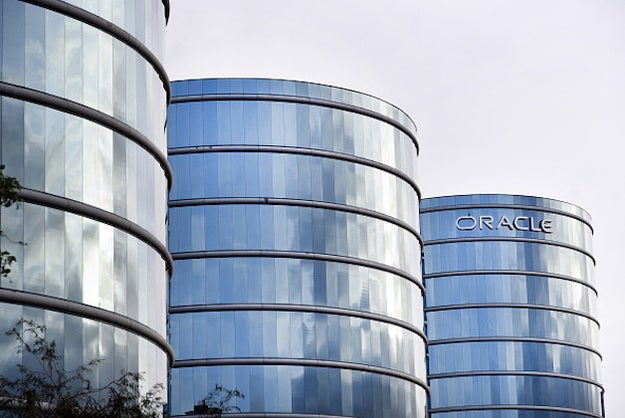
John Paczkowski / BuzzFeed News
Jim Ray is the kind of urban-dwelling liberal who you’d think finds prepping a little silly. Stockpiling food and ammo in anticipation of some civilization-destroying cataclysm? That, he says, is the province of nutty conservatives, and Ray, 37, isn't one of them. He lives in a one-bedroom apartment in San Francisco with his wife, Sadie, and their toddler. He works in developer support at the popular software startup Slack. He doesn&039;t own a gun, and he has no plans to buy one. He and his wife did get an earthquake preparedness kit when they moved here from Seattle five and a half years ago — but every San Franciscan needs an earthquake kit.
Then, around the start of the new year, Ray looked through the earthquake kit to check whether any perishables — batteries, glow sticks, calorie food bars — were expired. He had performed this ritual in years past, but with a Trump presidency on the horizon, this time it felt weightier. So when he ordered replacement items on Amazon, he also bought some new things, like a tarp, “just so I could set up a mini shelter if we needed to,” and a water-filtration straw.
“There&039;s this undeniable feeling — is there something else we need to be preparing for?” he said. “The world in general feels more tumultuous than it did, in a lot of ways. For liberally minded people, the election made that a reality in a way that it wasn&039;t before.”
As many liberals look toward President-elect Trump&039;s inauguration on Friday with a feeling of impending doom, some are taking inspiration from preppers on the other end of the political spectrum. Theirs is a quieter kind of prepping, with a degree of self-consciousness — and it involves a lot less weaponry. Some anxious souls are buying jugs of water and dehydrated meals — or even, in at least one case, obtaining foreign visas and unregistered vehicles — while others are simply considering their earthquake kits and backpacking gear in a new light.
There&039;s a sense in which prepping for a Trump administration is basically incompatible with liberal values. It&039;s not based on science, or, if we&039;re being honest, any hard evidence at all. To imagine a civilization-altering catastrophe under the Trump administration, you have to make several mental leaps. Still, Trump&039;s erratic tweets and other pronouncements can easily fuel such fantasies. Many of those dabbling in prepping are, they say, just playing it safe.
At Disaster Supply Center, a survival kit store in San Rafael, half an hour&039;s drive north of San Francisco, car kits — with food, water, blankets, ponchos, flashlights, and tents — have been flying off the shelves. Sales in January were up between 20% and 30% compared with a year earlier, according to Michael Skyler, who owns the business along with his wife, Mona. (He declined to disclose exact figures.)
“The instability in the political arena has brought some people out to just get prepared, not knowing what may happen,” Skyler said. “People see it&039;s possible to have more than just a natural disaster.”
One concerned citizen, Deb, who asked that her last name be withheld, lives in a rural area in the middle of Pennsylvania where extreme weather or natural disasters aren&039;t really a concern. Apart from first aid items in her car, she didn&039;t own emergency preparedness supplies. But right before the election, when there was speculation in the press over whether President Obama would retaliate against the Russians for hacking the Democratic National Committee, the possibility of an escalating cyberwar suddenly seemed real, so Deb ordered a cubic water container from Amazon. Anxious for it to arrive, she went to get another one at Walmart.
“And I never shop at Walmart, liberal that I am,” Deb, who is in her mid-40s, said with a laugh. She now has two water containers, totaling 12 gallons. “It definitely feels a bit like overkill, because I definitely have cans of seltzer water lying around, too.”
Later, in December, Deb came across the blog of the Survival Mom, a popular site run by a Texas mother who argues that prepping is common sense. That prompted Deb to order between $200 and $300 worth of dehydrated food — which, in a disaster scenario, she would share with her six cats. “It’s like a big grocery bill for me,” she said, noting that other packages of survival food sold online run into the thousands of dollars. An article on The Sweethome reviews site, Deb said, helped her fill in the gaps in her stash of first aid gear.
Most survival equipment is utilitarian by design, but surviving a disaster doesn&039;t have to involve bland-tasting food and off-brand products. One startup, Preppi, sells what might be described as survivalist chic. Its signature Prepster kit, encased in a vintage-inspired canvas doctor bag, includes cartons of Boxed Water, a bar of TCHO Chocolate, face and hair care products from Malin+Goetz — and a waterproof notebook from Field Notes. A one-person kit sells for $375.00, the two-person version costs $445.00, and a custom monogram is $75 extra. The actress Julie Bowen, star of the show “Modern Family,” gave the kits to the show&039;s crew as holiday presents, according to The New York Post.
He&039;s also working on protections ranging from encryption and measures to hide his network traffic, to building faraday cages in his home.
One prominent figure in the tech industry, who requested anonymity due to his security concerns, described preparations for a Trump presidency that sounded straight out of a spy novel — perhaps because they were put together with the help of a consultant from an intelligence agency. This person&039;s supplies include all the basics for disaster preparedness (water, food, medicine), as well as next-level precautions should things really go to hell (solar panels, gas masks, dehumidifiers to provide fresh water from the air).
But this tech figure has also taken precautions specifically to protect against Trump himself, as opposed to just the fallout from, say, a nuclear exchange in Asia. To that end, he is securing duplicate passports and foreign visas, as well as stashes of cash and unregistered vehicles should he need to bug out. He&039;s also working on protections to prevent being spied upon — ranging from encryption and measures to hide his network traffic, to building faraday cages in his home.
Not all prepping efforts are so elaborate. Mike Davidson, the former vice president of design at Twitter, who now lives in Seattle, said he started buying supplies a couple weeks after the election. After doing some research on online, he got water-filtration straws, hand-crank flashlights, freeze-dried and canned food, and eight five-gallon jugs of water. He&039;s considering getting a generator, too. Most of the lightweight gear, he said, is in a bag that “I could carry for miles if I needed to.” In all, he has spent “probably several hundred dollars on this.”
“I&039;m anti-gun. I would never have a gun in my house. I&039;m not going that far,” Davidson, 42, said. “But I do think if you have a house, if you have space, and you have some disposable income, it makes sense to ensure you can live for a few weeks if you have to.”
Not surprisingly, guns don&039;t seem to play a major role in preparations by liberals. Gun store owners contacted by BuzzFeed News said there hadn&039;t been any Trump-related surge in sales since the election. At least, there hasn&039;t been anything on the scale of what happened after President Obama&039;s election in 2008, when enthusiasts rushed to buy firearms and ammunition because of fears that Obama would restrict gun ownership.
“Ammo went through the roof,” said Jeff Guite, the president of the Seattle-based American Preparedness, which sells emergency kits.
And while conservatives might be interested in buying ammunition, “liberals might want to put their money into softer products,” Guite said. That includes “stoves, things that would lend more to comfort and security than protection.”
“It makes sense to ensure you can live for a few weeks if you have to.”
Jason Shellen, a longtime tech industry executive who lives in Lafayette, California, made the point that “the one thing you have in California is people who are active and outdoorsy anyway.” He said his brother in Santa Cruz had experienced a loss of water pressure in a recent storm. “And when I checked on him, he said, &039;Oh we&039;re good, we just went into our camping supplies, and we have a big thing of water.&039;”
In California&039;s Bay Area, REI has recently seen strong demand for its wilderness survival courses, and the waitlists for the latest backcountry orienteering courses are “definitely a little bit longer” than last year, according to Michael Beetham, the market coordinator for outdoor programs and outreach. In pouring rain on a recent Saturday, all 12 students in a wilderness survival course showed up, Beetham said. But he cautioned that this interest — among a population crazy for the outdoors — “could be due to any number of influences.”
Still, there is something about the prepper lifestyle that can appeal to one&039;s inner adventurer, even among those who might look askance at traditional preppers.
“There&039;s the sort of conspiratorial, militant aspect of them that I find a little bit off-putting, but there&039;s a lot of it — I&039;m an Eagle Scout — there&039;s a lot of it that reminds me of the &039;be prepared&039; mantra of being a Boy Scout,” said Ray, the Slack employee.
For people like Ray, any prepping efforts aren&039;t all-consuming in the way they are for, say, people on the National Geographic show “Doomsday Preppers.” Deb, from Pennsylvania, said it was “hard for me to even think of it being a possibility that I’d have to use the water or the food.”
“I think a lot of people who are prepping think they will have to use it, possibility imminently,” she said. “And just, I don’t know, that seems so surreal, but 2016 was so surreal that you think, well, I guess I should do this.”
Mat Honan contributed to this report.
Quelle: <a href="The Trump Administration Is Turning Cautious Liberals Into Paranoid Preppers“>BuzzFeed


















